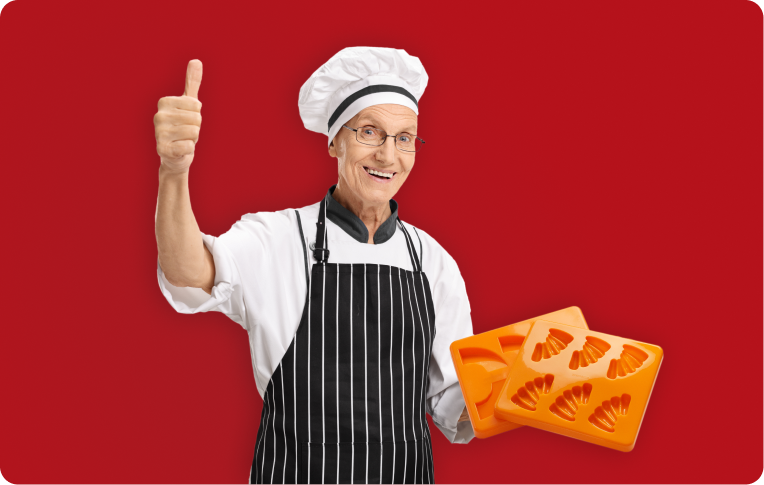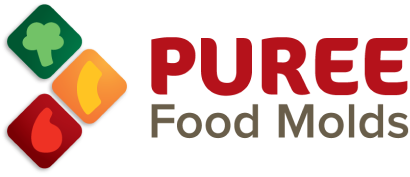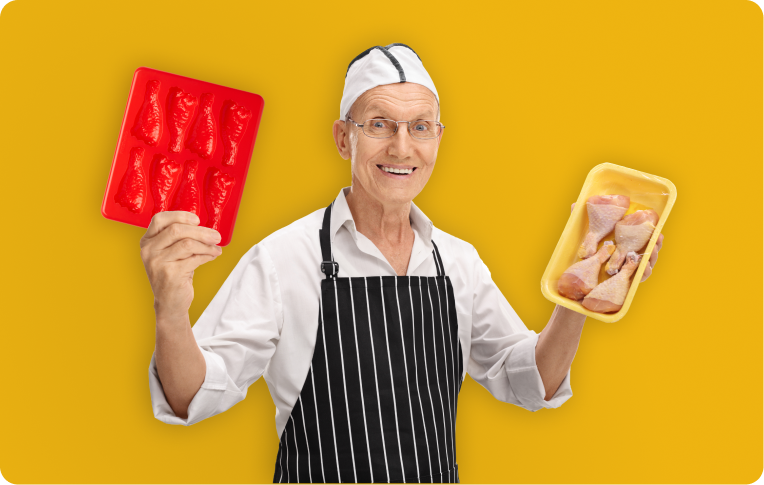Improving Nutrition Intake in Dysphagia

Adequate nutrition is essential for everyone, but for individuals with dysphagia, achieving proper nutrition can be particularly challenging.
Dysphagia, a condition that affects swallowing, doubles the risk of individuals developing malnutrition. Texture modified meals are often recommended to make eating safer and easier, but these meals can sometimes lack visual appeal, leading to reduced food intake.
In this blog post, we will discuss the importance of nutrition for people with dysphagia, the risks they face, and how puree food molds can be a practical solution to enhance the presentation of texture modified meals and encourage better nutritional intake.
The Importance of Nutrition for People with Dysphagia
1. Understanding Dysphagia and Its Challenges
Dysphagia affects millions of people worldwide, making it difficult for them to swallow food and liquids safely. This condition can lead to:
- Choking and aspiration risks.
- Difficulty in consuming enough nutrients to maintain health.
- Decreased quality of life due to anxiety around eating.
Puree food molds can play a vital role in improving the dining experience for those with dysphagia by making texture modified meals more appealing and easier to eat.
2. Higher Risk of Malnutrition
Individuals with dysphagia are at a higher risk of malnutrition. According to studies, up to 68% of elderly patients with dysphagia are malnourished. Factors contributing to this include:
- Reduced appetite due to unappealing food.
- Limited variety in texture modified meals leading to monotony.
- Difficulty in consuming sufficient quantities of food.
By using puree food molds, caregivers can create meals that look more appetizing and encourage better food intake, thus improving overall nutrition.
Enhancing Texture Modified Meals with Puree Food Molds
1. Improving Visual Appeal
The presentation of food significantly impacts appetite and enjoyment. Puree food molds can:
- Transform pureed foods into visually recognizable shapes.
- Make meals look more appealing, similar to regular foods.
- Encourage individuals to eat more, improving their nutritional intake.
For example, pureed carrots can be molded to look like sliced carrots, making them more attractive and appetizing.
2. Encouraging Better Nutritional Intake
When meals look good, people are more likely to eat them. For individuals with dysphagia, this can mean:
- Increased food consumption due to improved visual appeal.
- Better balanced diets with a variety of foods presented attractively.
- Enhanced overall health by ensuring adequate nutrition.
Using puree food molds can make texture modified meals more enticing, promoting better eating habits.
3. Reducing Food Fatigue
Food fatigue can develop when meals are monotonous or unappealing. By using puree food molds, caregivers can:
- Introduce variety in the appearance of meals.
- Make eating a more pleasant experience.
- Reduce negative associations with food.
This can help individuals with dysphagia enjoy their meals more and improve their overall nutrition.
For individuals with dysphagia, achieving adequate nutrition can be challenging but is essential for maintaining health and quality of life. The use of puree food molds can transform texture modified meals into visually appealing and appetising dishes, encouraging better food intake and reducing the risk of malnutrition. By focusing on the presentation of food, caregivers can make a significant positive impact on the nutritional health and overall well-being of those with dysphagia.


